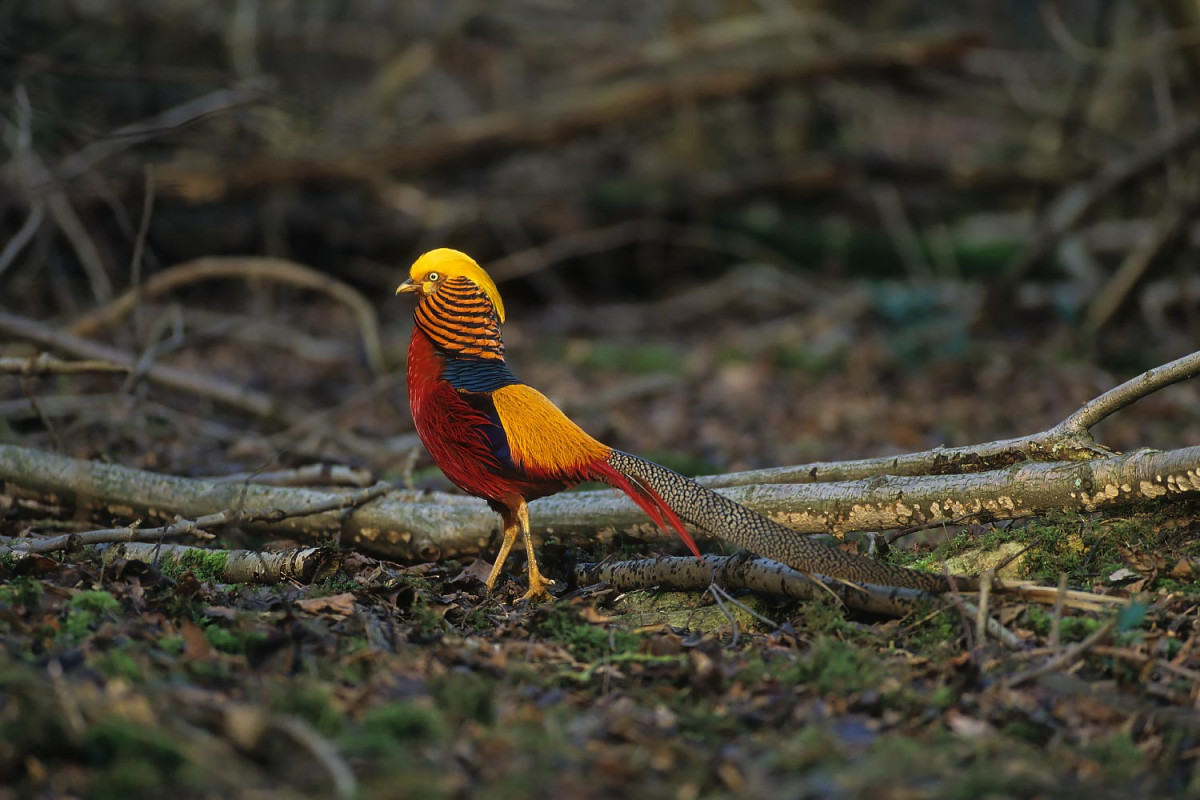In the world of avian wonders, there exist a select group of extraordinary creatures that captivate our imagination and fill the pages of natural history with their unique beauty and mystique. These are the rarest birds on the planet, species that inhabit remote corners of the Earth, often teetering on the brink of extinction. Their breathtaking plumage, distinctive behaviors, and the tales of their survival against all odds make them not just subjects of scientific curiosity, but also symbols of our planet’s delicate balance. In this article, we embark on a journey to explore some of the rarest and most enchanting birds that grace our world, shedding light on their remarkable features and the challenges they face in a rapidly changing environment.
1. SOUTH PHILIPPINE DWARF KINGFISHER

For the first time in 130 years, this Philippine-based bird has been spotted, and for the first time ever – photographed and exposed to the world!One of the most unpredictable flyers, this cute little species managed to evade us since 1890. The South Philippine dwarf kingfisher has a stunningly coloured plumage with a kaleidoscope of metallic lilac, orange, and bright blue spots. They breed and roost in tropical or subtropical habitats such moist lowland forests. Their numbers are endangered to habitat loss. The scientist Miguel David De Leon as well as the rest of his team have dedicated their careers to studying, documenting and ensuring this sweet birds conservation.
2. STRESEMANN’S BRISTLEFRONT

The Stresemann’s Bristlefront is one of the rarest birds on earth – so rare that there is only one left.
Researchers thought all was lost until in December 2018 in Brazil, one Bristlefront was spotted. You would think this would have brought hope for the species but unfortunately due to the loss of most of their habitat in the Atlantic forests of the Americas, the chances are pretty slim. The Atlantic Forest has been reduced to less than 8 percent of what it was and as a result, many species have become completely extinct.
The Stresemann’s Bristlefront is an unusual species. These long tailed burrow nesters from the Rhinocryptidae family get their name from the feathers on their heads. They are almost 8 inches long. The male is charcoal gray and the female a reddish cinnamon brown.
3. NEW ZEALAND ROCK WREN

As one hears from the name, the New Zealand rock wren is endemic to the South Island of New Zealand. Its Māori name, pīwauwau, means “little complaining bird” and mātuitui which means “twitch”, after its bobbing motion.
The New Zealand rock wren is not the best flyer, it can hardly manage more than 7 feet off the ground or distances of more than 100 feet! They hop and run in a very unusual way as they bob their heads and flick their wings.
New Zealand rock wren have long stout legs, making them good rock climbers. They can survive in high altitudes, with snow year round, up to a height of 1000 feet.
Rock wrens eat mainly invertebrates from the ground, as well as berries, seeds and nectar from flax flowers.
The New Zealand rock wren population decreased dramatically almost by 50% between 1985-2005. The remaining survivors were removed to the southern tip of the southern island for conservation, closely monitored and kept away from their main predators, stoats and rats.
Also Read: YouTube Channels with the Highest Number of Subscribers in 2023
4. RUFOUS-HEADED HORNBILL

Native to the Philippines, the Rufous-headed Hornbill is one of the most endangered of its species. They sport a bony ‘casque’ which sticks out from the top of their wrinkly red-orangey bills. The bill may seem strong but it is actually structurally thin with hollow bone cells.
Rufous-headed Hornbills have an interesting way of protecting their little ones: both mama and papa use saliva and mud to build a wall across the entrance to a tree cavity, essentially sealing the female and eggs inside. They leave a small hole at the top through which the male can pass food. And if that isn’t enough, the parents are extremely territorial when defending the nest.
The Rufous-Headed Hornbill is now extinct on some of the Philippine Islands due to severe deforestation, in addition to hunting and nest poaching. However a great conservation effort is being made to save them, mainly by guarding their nests. Optimistically, their numbers seem to be back on the rise.
5. KAKAPO

The kakapo is a nocturnal, flightless parrot endemic to New Zealand with no close relatives at all! This odd-looking yet sweet bird is critically endangered.
Kakapos are loners who never leave their territory but stay in the same range for most of their life.They nibble seeds, plants and various fruit from the ground though they can climb high into trees. They like to leap from trees and flap their flightless wings, but at best, manage a comical yet controlled plummet.
Before Man arrived on the islands of New Zealand, this bird was very common throughout all the forests but when humans and other predatory mammals arrived, their numbers dropped dramatically. By the 1990’s, there were only 50 left and now none can be found in the wild, but in conservation parks where much effort is being invested to bring their numbers up again.
6. BLUE-EYED GROUND-DOVE

These lovelies are the rarest and most endangered doves in the world, found in the Cerrado region of Brazil. For 75 years they were thought to be extinct, until 12 of this species were happily rediscovered in 2015!
Ornithologist Rafael Bessa heard a mysterious bird call, recorded it and when he played it back, discovered that it was the Blue-eyed Ground-Dove. To his surprise, they were not extinct after all.
Named for their shimmering blue eyes which match the spots on their wings, the azure blue is a striking contrast to the rest of their mud-brownish-red plumage.
7. IMPERIAL AMAZON

The Dominican Republic’s Imperial Amazon, locally known as the sisserou, is endemic to this Caribbean island and is its national bird.
The species is critically endangered. In 2019, it was estimated there were only about 50 mature individuals left in the wild, down from a previous count of hundreds. The reason for this was twofold: a serious loss of natural habitat and to make things worse, Hurricane Maria.
Imperial Amazons are about 19 inches long, weighing about 23 oz (females) or 32 oz (males). Rather big for a parrot! As they are very shy, they travel in groups of three at most. Sometimes they feel comfortable enough to flock together with red-necked amazons. They are good climbers and strong flyers with powerful wings. They prefer to perch on the tops of trees. These are difficult to detect, as they are well camouflaged by their plumage.
8. NEW CALEDONIAN OWLET-NIGHTJAR

Also known as the “Enigmatic Owlet-Nightjar” this is one of the most mysterious of all the rare birds on the list. Bigger than the Australian Owlet-Nightjar, it was second in size only to the New Zealand Owlet-Nightjar which is now extinct.
Back in 1880, only two New Caledonian Owlet-Nightjars were collected. One of them was discovered as he flew into a bedroom in Tonghoué, a small village in New Caledonia. By 1915 only very few were spotted. Researchers believe that their numbers haven’t risen.
The New Caledonian Owlet-Nightjar is black (birds) with grey stripes with a long slightly rounded tail, short, rounded wings, and long, stout legs showing he is a ground feeder. Its voice is unknown but it is assumed he makes similar sounds to other Owlet-Nightjars: whistles and prolonged trilling sounds.
Less than 50 New Caledonian Owlet-Nightjars are left and no conservation efforts have been made to conserve this species.
9. CEBU FLOWERPECKER

Found only in the Cebu Islands in the Philippines, these birds were thought to be extinct due to the disappearance of their habitat. But in 1992 they popped up again in a small limestone forest in the Central Cebu Protected Landscape.
Their name, Quadricolor, refers to the 4 colors of the male’s plumage: blue, red, white and yellow. Cebu Flowerpeckers are frugivorous which means they eat only fruit and seeds.
There are only 105 Cebu Flowerpeckers in the world. A great effort is now made to conserve them.
10. GOLDEN PHEASANT

You might have seen these pheasants at the zoo but those are actually hybrids.
The real golden pheasants are native to the Western forests of China. Named after their golden crests, we are wowed by the male’s colorful body! They can grow up to 41 inches long and the tail is 2/3 the length of the entire body. Golden pheasants are really hard to find and there is little known about them as they are seldom seen in their natural habitat.
There are only about 1000-2000 of these beautiful birds left.
Also Read: Essential Factors to Evaluate When Purchasing a Laptop in 2023











